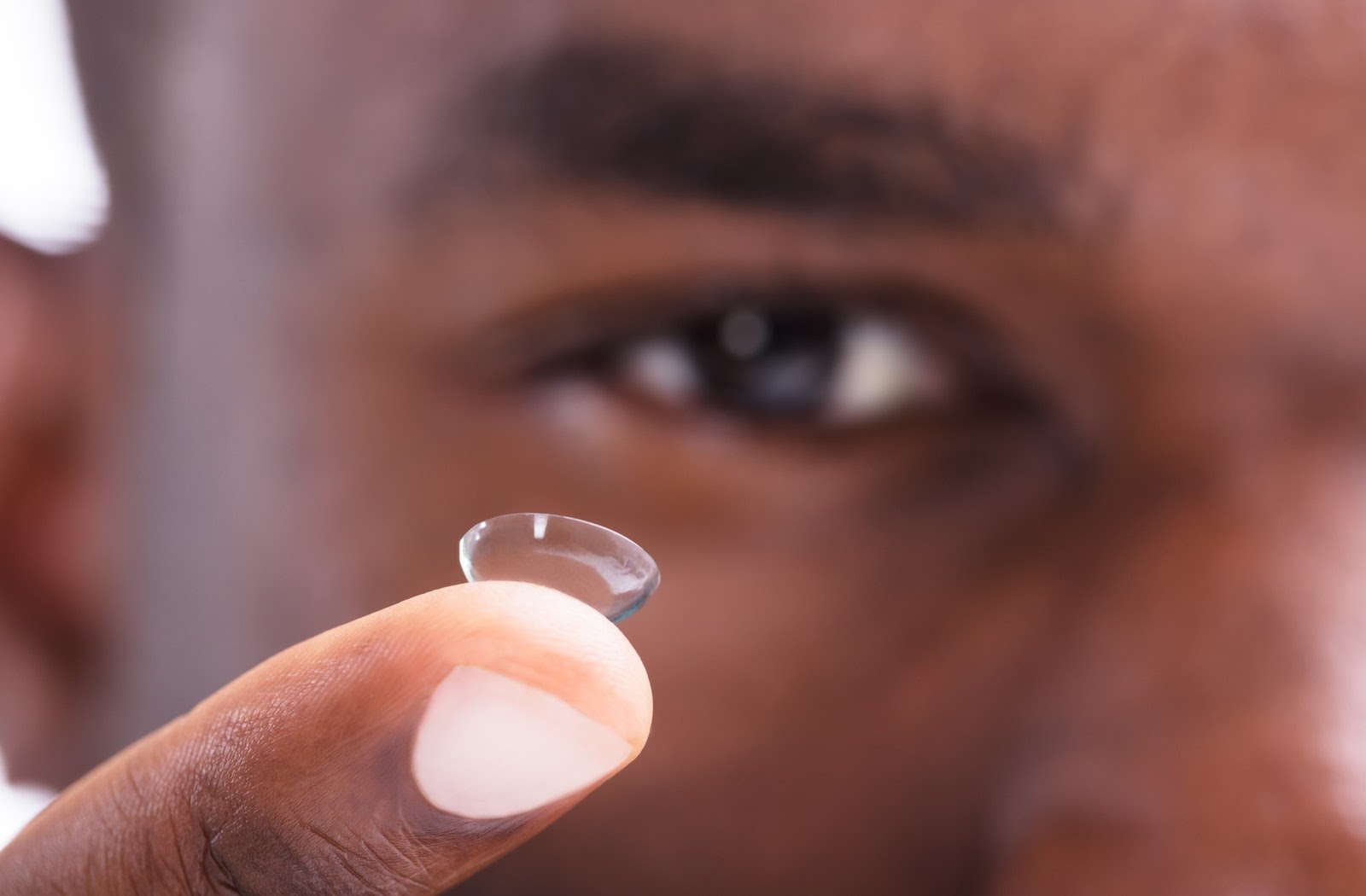There are lots of different kinds of eye drops, which can be used to treat many different conditions. Eye drops can be used to treat allergies, dry eyes, and can even be prescribed for conditions such as glaucoma. But the best types of eye drops are those made specifically for the purpose that you need them for.
If you’re a contact lens wearer the good news is yes, you can use eye drops with contact lenses. But how can you tell which are the best eye drops for contacts?
The safest option is to book an appointment with your optometrist and bring your eye drops to make sure they’re alright to use during contact lens wear. In the meantime, keep reading to learn more about the different types of eye drops for contacts, how to use them, and other tips to keep your eyes healthy when wearing contacts.
What Types of Eye Drops Can Be Used with Contacts?
You can use eye drops to alleviate symptoms if your eyes are dry while wearing contacts. There are many different types of eye drops, and not all of them are the same. To keep your eyes comfortable and safe you need to know what eye drops you can use with contact lenses. These are the varieties of contacts that you can use with contact lenses:
Rewetting Eye Drops
Rewetting eye drops are eye drops specifically made to keep your eyes moist while wearing contact lenses. Rewetting drops lubricate your eye while hydrating your contact lenses, making your eyes more comfortable during lens wear.
These eye drops are completely safe to use with contact lenses, and are useful for improving comfort and clearing out debris from underneath your contact lenses.
Dry Eye Drops
Dry eye drops come in a variety of formulations, and are made to treat dry eye symptoms. Some types of dry eye drops are thinner, while others are thicker.
The thinner drops may be okay for use with contacts, but it’s generally better to use rewetting eye drops made for use with contact lenses. Thicker dry eye drops can actually cloud your vision or “gum up” your contact lenses, so it’s best to contact your eye doctor before using dry eye drops with contact lenses.
Vasoconstrictor Eye Drops
Eye drops made to treat eye redness contain specific ingredients called vasoconstrictors. Vasoconstrictors treat red eyes by shrinking the tiny blood vessels in your eye.
While they are effective in treating red eyes, vasoconstrictor eye drops can leave deposits on the surface of your contact lenses, which can cause cloudiness, and even rebound redness if overused.
If you need to use eye drops to treat red eyes, it’s best to use these drops and avoid wearing contacts until after the redness has fully cleared.
Medicated Eye Drops
Medicated eye drops are not suited for use with contact lenses. Medicated eye drops are typically used to treat eye infections. If you need to use medicated eye drops, it’s best to avoid wearing contacts until your eyes fully recover.
How to Put Eye Drops In With Contact Lenses
If you need to use eye drops while wearing contacts, follow these steps for safe use:
- Remove your contact lenses & store safely
- Tilt your head back to keep the eye drops in the eye
- Hold the bottle over the eye and squeeze without touching the eye with the bottle tip
- Close your eye for 1-2 seconds
- Blink to distribute the eye drops
- Reinsert your contact lenses after adding the eye drops to your eyes
Depending on the type of eye drops you’re using, you may or may not be able to place them in your eyes while wearing your contacts. Always read the directions before use and contact your optometrist if you have any questions!

Proper Contact Lens Care
Taking proper care of your contact lenses can help keep your eyes healthy and your vision safe. Follow these hygiene tips to take care of your contact lenses:
- Always wash your hands thoroughly before handling contact lenses or eye drops
- Clean your contact lenses regularly
- Make sure to store your contact lenses in a clean case
- Rinse the case with fresh solution & leave the to air-dry
- Replace your contact lens case at least every three months
- Avoid showering while wearing contact lenses
- Remove your contact lenses before swimming or using a hot tub
- Don’t soak or rinse your contact lenses in tap water
- Book regular eye exams
Signs You Should Take Your Contacts Out
No matter what type of contact lenses you wear, it’s important to pay attention to how they’re affecting your eyes.
To keep your eyes safe you should always remove your contact lenses if you experience:
- Irritated or red eyes
- An injury to the eye
- Pain that’s continuing to worsen in or around the eyes
- Sensitivity to light
- Sudden blurry vision
- Unusually watery eyes
- Eye discharge or infection
If you are experiencing any of the above symptoms, and they don’t seem to go away after you remove your contact, it’s best to call your eye doctor.
Additionally, if you have any questions or concerns about eye drops and contact lenses, please don’t hesitate to reach out to our team at the Eye Care Center of Colorado.


